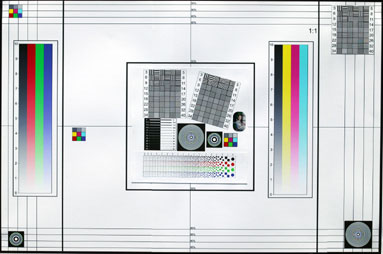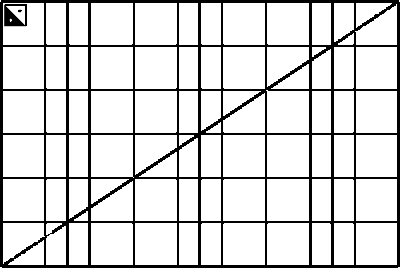![]()
![]()
I have tested major Canon EOS EF lenses for resolution, distortions and chromatic aberration using Canon 1Ds digital camera. This camera has a 11 megapixel full frame (24x36mm) CMOS sensor that gives output image size of 4064x2704 pixels. Full description of this camera can be found on Digital Photography Review page.The lens resolution test is limited to the distance between sennsor's pixels, which is 8.8 µM. This translates into 57 line pairs per millimeter. Camera resolution can be given in number of lines (or line widths) per picture height, and in this case it is 2704. It is usually expressed in hundreds, so the Canon EOS-1Ds sensor resolution is 27. Lenses that perform equal or better than this will only have resolution 27, less sharp lenses will have a lower number. Although for all lenses tested here in ideal conditions (aperture f:8, center image) the resolution approaches 27, in conditions less optimal, such as the highest aperture and on the sides of the frame, the results vary significantly.
I have used 2 different charts to test the lenses. The resolution chart shown below has been used (click the thumbnail to download).

Four circle charts are displayed per lens at a given focal length. Two made at the center and two at the bottom right of the above chart, two at f:8 and two at maximum aperture.
The lens distortion & chromatic aberration chart is shown below. If you click on this picture you'll download a full 12x18" original (same 2:3 ratio as the sensor and 24x36mm negative frame).

The chart consists of several lines forming perfect squares. In the upper left corner there are two dots: white on black and black on white, to check for chromatic aberrations. After the picture is taken, the computer file is superimposed with the photo and the grid re-scaled so that the top and bottom horizontal lines at their center overlap the photographed image, revealing minute lens distortions. Horizontal and vertical scaling must be the same. On the lens summaries photos the computer generated grid is shown in white, the actual photo is in its natural colors. Exposure was set to 'auto' (resulting in generally gray images) and the lenses were set to their widest aperture to reveal the extent of vignetting (how much darker are the picture edges than the center). Vignetting is smaller at narrow aperture settings. For chromatic aberrations, look at colors around the white and black dots. There should not be any, just black and white.
The next page displays the results.
________________________

© 2004 PikesPeakPhoto. All rights reserved.